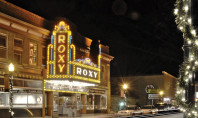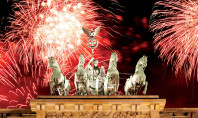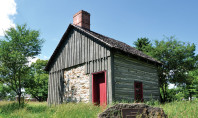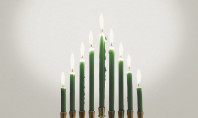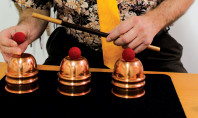A Dickens Descendant
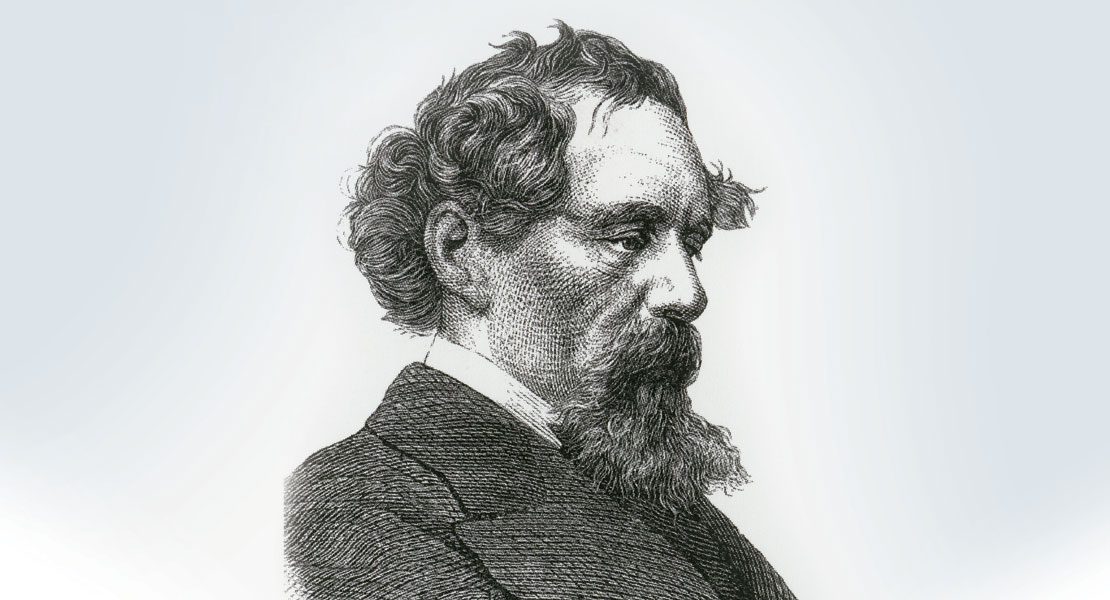
By Kathryn Finegan Clark
Photo courtesy Shutterstock.com
Charles Dickens did not visit the Lehigh Valley during his American tours in the 1800s, but his great-great grandson is not making the same mistake.
Though not following the same route, Gerald Charles Dickens still walks in his ancestor’s footsteps in another way, breathing life into the words of his famous forebear. He’s been coming to Bethlehem for years and he’ll be returning this holiday season.
Gerald Charles Dickens is an actor with rare talent and he has also fulfilled his ancestor’s dream; he has become the actor Charles Dickens had wanted to be.
He’ll be appearing in Bethlehem in a performance sponsored by the Moravian Book Shop on December 5 at Moravian College’s Foy Hall. Those lucky enough to hold tickets for his reading of “A Christmas Carol,” are in for a rare literary treat.
They’ll relive the much-told tale of penny-pinching Ebenezer Scrooge, his run-ins with three fearful ghosts sent by his former partner, Jacob Marley, and Scrooge’s Christmas morning redemption. It is a story of both light and dark, with light finally triumphing – a story that’s hard not to love.
And just as the Victorian writer happily pulled from the endless depths of his imagination a string of unforgettable characters to inhabit the chapters of his novels, his versatile great-great grandson literally becomes each of the 26 characters in the
Christmas classic.
Gerald Charles Dickens is an actor with rare talent and he has also fulfilled his ancestor’s dream; he has become the actor Charles Dickens had wanted to be.
Gerald Dickens has been performing his one-man Dickens’ programs across the United States since 1993. I met him several years ago after a performance of “A Christmas Carol.” He said, “I use voice, expression and atmosphere. Each character has a very definite voice, a way or moving and
facial expressions.”
Dickens, bearing an uncanny resemblance to his famous ancestor’s engraved images, wore a long coat, a waistcoat, a cravat, a top hat and carried a cane. Aside from those he used few props. “I wanted to keep it all so simple to let the audience focus on the words and the performance without distraction,” he said.
Alone on the stage, the actor pulled the hat and/or coat on and off as characters came and went. The coat even doubled as Mrs. Fezziwig’s skirts as she held them up to dance. The cane doubled as Tiny Tim’s crutch.
Like a conjurer, this contemporary Dickens remade himself with each character he portrayed. “Everyone knows the story,” he told me, “so I don’t have to worry too much about the plot.” The performance is magical.
He admitted there still is “that creative streak in the family” with relatives including a biographer, a writer and an actor with others going into jobs such as PR work and catering – “quite expressive occupations,” he noted.
The 50-year old British actor was born and reared in Kent in southeastern England. A graduate of West Kent College, he now lives in Oxfordshire, and has also worked as a director and producer for many years.
Dickens said “A Christmas Carol,” was written as a novella. He explained that his great-great grandfather had intended to write it as “a much smaller story” but he’d said, as he got into it, the characters took possession of him. The actor said the same thing happens to him when he begins a performance –
“every time.”
Dickens himself gave dramatic readings of his book during his second tour of the United States in 1867-1868. He didn’t write “A Christmas Carol” until 1843, a year after he had returned to England from his initial trip to America.
During that first tour in 1842 Dickens reached a kind of rock star status as he traveled from Virginia to Missouri reading from his works. Crowds gathered outside theaters and libraries, and so did scalpers demanding – and getting – large sums for tickets.
Dickens’ biographers contend he was the first great modern celebrity. One biographer, J.B. Priestly, wrote Dickens had “the greatest welcome that probably any visitor to America has ever had.” The touring writer was not, however, reluctant to express his opinions. He was openly opposed to slavery and he favored labor reform. After the glamour of his welcome wore off, his critics attacked those views. During his second tour, which took place after slavery had been abolished and the Civil War had ended, he sought to regain popularity—and he did.
It is to Dickens work that we probably owe our present view of the Christmas holidays as a warmly festive time filled with family gatherings and fun. His vision of the holiday reflected what was happening in England at that time.
Generations earlier the secular celebration of Christmas had gone over the top with the court of King Henry the VIII. Later, the puritanical Oliver Cromwell pretty much quashed any holiday merriment and by Dickens’ time, the people were longing for a return to pre-Cromwell traditions and welcoming new ones. Then, too, Queen Victoria’s Prince Albert, a German, introduced the Christmas tree to England and people started extending Christmas greetings to each other. “Merry Christmas” was first said in this book – and we’ve been saying it ever since.
Dickens’ little morality tale apparently perfectly matched his readers’ need for the gaiety that had been missing. It was published Dec. 19, 1843, with a red cloth cover and gilt-edged pages. The first run of 6,000 copies was sold out by Christmas Eve. By the following May, the seventh edition had sold out; it was followed by 17 more editions of the original work.
The original manuscript, which Dickens had bound in leather for his attorney can now be seen at the Pierpont Morgan Library and Museum in New York City.
Gerald Charles Dickens will be performing on Dec. 5 at 7 p.m. at Foy Hall, Moravian College. Tickets are $22 each and now on sale at the Moravian Book Shop, 428 Main St., Bethlehem, or by calling 610.866.5481.

